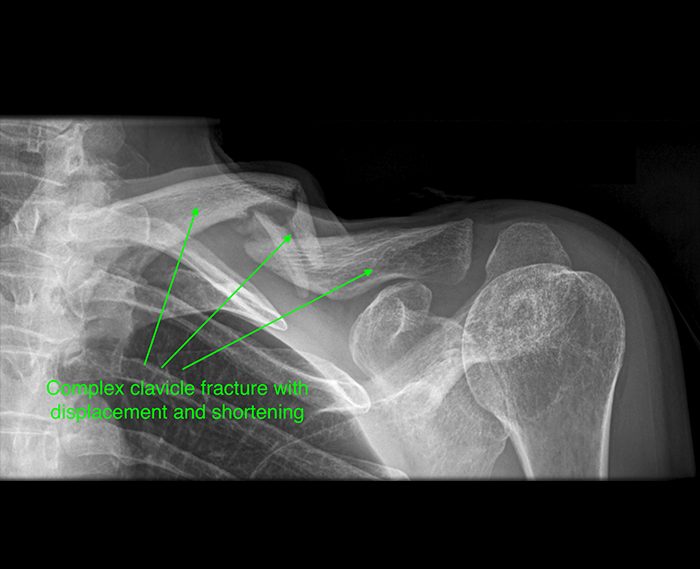As we move into Spring and Summer, with warmer weather and longer days, many more people dust off and get out their bikes. There are many popular rides this time of year, with Around the Bay and The Great Victorian Bike Ride. Over the Summer holidays, many head out for classic downhill rides like the Hero’s Trail or across to Derby, Tasmania.
The popularity of cycling in Australia continues to grow. The popularity of cycling includes as a mode of transportation and a recreational activity. Bicycling Australia says cycling has increased by almost 70% since 2020. Cycling is a low-impact aerobic activity that improves fitness, strengthens your legs and gets people outside. Other less apparent benefits include easing stress and anxiety, boosting brain power and helping balance and coordination. Because cycling is low impact, I’ve many patients with arthritic knees who can continue to exercise. However, the apparent potential drawback of cycling is the risk of injury.
The clavicle, or “collarbone”, is a curved bone that lies just under the skin and acts as a strut that supports the shoulder during movement. The clavicle connects the upper part of the breastbone to the shoulder blade, where it forms the AC joint. The AC joint is held together by strong ligaments.
The clavicle is one of the most commonly fractured bones and the most common bone to break in cycling accidents. It occurs from direct impact to the shoulder or from landing on an outstretched arm to protect themselves. Because these injuries are considered “high-energy”, they often cause a comminuted fracture with multiple fracture lines, and the clavicle displaces and shortens. Pain, swelling, bruising, and a bump or deformity over the fracture site are symptoms of a broken collarbone. Although many clavicle fractures can be treated with a simple sling, these “high-energy” are often treated with surgery to put the bones back together and to hold them with a specially-designed plate and screws. The benefits of surgery for these fractures are quicker return to full function and movement. Surgical fixation may allow people to return to work earlier. There is also a higher chance of the bones uniting or knitting together with surgery. Getting back on the bike more quickly is a distinct advantage for cyclists.
The other major cycling injuries around the shoulder are AC joint injuries and dislocations. It occurs from falling directly onto the point of the shoulder, and the collarbone separates from the scapula. It causes pain at the top of the shoulder, swelling, and possibly a visible bump or step above the shoulder. The injuries range from a mild sprain to a partial separation to a complete dislocation. Many of these injuries can be managed with rest and physiotherapy. However, dislocations may require surgery to restore the anatomy and reattach the collarbone to the shoulder blade.
As for many activities, prevention is better than cure. The use of protective gear goes without saying. Mandatory bicycle helmet laws were introduced in Victoria in 1990 and have saved many lives. Helmets, gloves and pads are the basics, but many hardcore mountain bikers use protective body armour. For novices not everyone likes wearing or feels comfortable in lycra, but avoid wearing loose clothing that could get caught in your bike chains.
Develop safe cycling habits. This includes being aware of your surroundings and not taking unnecessary risks. Use bike lights and reflective gear for cycling in low light conditions such as dawn and dusk and at night. Be seen, be safe! Consider the weather, as rain, wind, and heat can also be obstacles. If inexperienced, using a wind trainer in those conditions may be safer. It would be best to be realistic regarding your fitness and skill level. I have seen many injuries from cyclists being unaware or underestimating the trail. My worst injury occurred due to fatigue and heat, leading to a lack of concentration in a critical descent.
Cycling in all its forms is an exhilarating activity. It takes me back to the freedom I had as a child riding around the local streets. However, know your capabilities and venture out with the proper protective gear. Be situationally aware at all times. If you’ve injured your shoulder and suspect a clavicle fracture or an AC joint injury, seek early medical attention.


